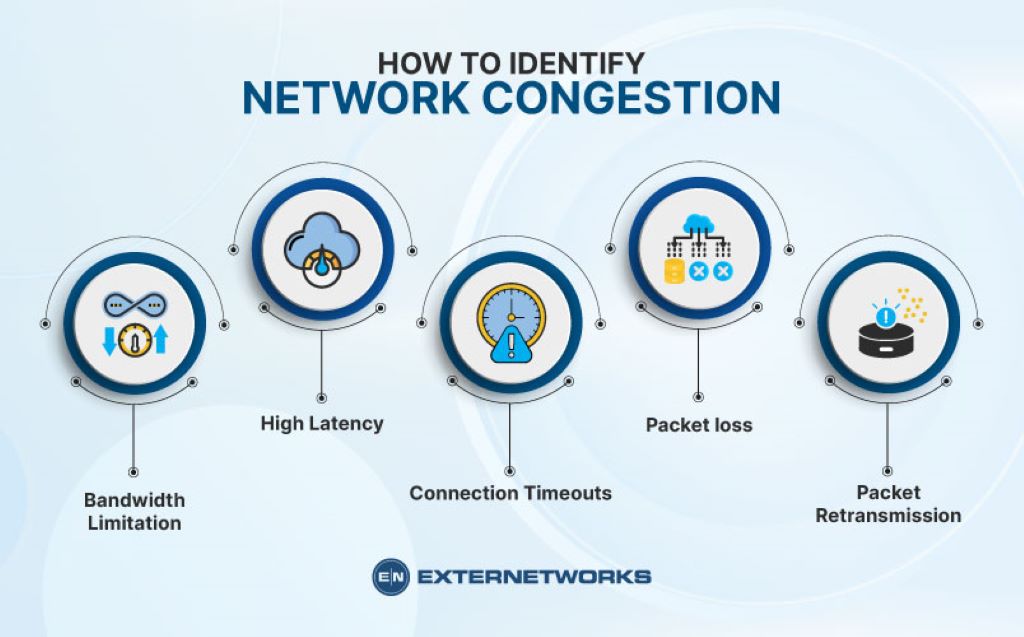In today’s hyper-connected world, a sudden loss of network connectivity can feel like a digital apocalypse. These disruptions can hinder work, communication, and entertainment, whether it’s a sluggish webpage, buffering video, or a complete internet blackout. Understanding the difference between network congestion and outages, and knowing how to troubleshoot them, is crucial for staying online and productive.
Contents
Network Congestion: The Digital Traffic Jam
Network congestion occurs when too many devices try to use the same network resources simultaneously. This can happen in various scenarios, such as a surge in internet usage during peak hours, a large file download hogging bandwidth, or a misconfigured network device. The symptoms of network congestion include:
- Slow internet speeds: Webpages load slowly, downloads take forever, and videos buffer incessantly.
- High latency: There’s a noticeable delay between clicking a link and the page loading, or between pressing a key in an online game and seeing the action on screen.
- Packet loss: Data packets fail to reach their destination, leading to dropped connections, choppy audio in voice calls, and pixelated video. If you find yourself asking, why is my internet not working on my phone, it could be due to these packet losses. For more information on resolving this issue, you can visit https://techno-geeksquad.com/blog/why-is-my-internet-not-working-on-my-phone/.
If you suspect network congestion, here’s what you can do:
- Check your internet speed: Use an online speed test tool to see if your connection is performing as expected. Compare the results to the speed you’re paying for from your internet service provider (ISP).
- Identify bandwidth hogs: Use your router’s admin interface or a network monitoring app to see which devices consume the most bandwidth. If you find a culprit, limit its bandwidth usage or disconnect it from the network temporarily.
- Prioritize traffic: Some routers allow you to prioritize certain types of traffic, such as video calls or online gaming. This can help ensure a smooth experience for those applications, even during congestion.
- Upgrade your plan: If you consistently experience congestion, consider upgrading to a faster internet plan with more bandwidth.
Network Outages: When the Lights Go Out
A network outage is a complete loss of connectivity, either on a local network or a wider scale. Outages can be caused by various factors, including:
- Hardware failure: A router, modem, or other network device malfunctions.
- Software glitch: A bug in the network software causes a crash or instability.
- Power outage: The power supply to the network equipment is interrupted.
- Physical damage: A cable is cut, a server room floods, or other physical damage occurs to the network infrastructure.
- ISP problems: The ISP experiences technical difficulties or maintenance issues.
Unlike congestion, which typically affects performance gradually, outages are sudden and result in a complete loss of connectivity. If you suspect an outage, here’s what you can do:
- Check your router and modem: Ensure that they are powered on and all lights indicate a normal connection.
- Restart your router and modem: Sometimes, a simple restart can resolve minor glitches.
- Check for ISP outages: Visit your ISP’s website or social media channels to see if they have reported any outages in your area.
- Contact your ISP: If you can’t find any information online, call your ISP’s customer support to report the outage and inquire about the estimated time of restoration.
Proactive Measures for a Resilient Network
Network congestion and outages are sometimes unavoidable. However, proactive measures can help minimize their impact and create a more resilient network.:
- Invest in quality hardware: Choose reliable routers, modems, and other network devices from reputable brands.
- Keep your firmware up to date: Manufacturers often release firmware updates to address bugs and improve performance.
- Use a surge protector: Protect your network equipment from power surges and fluctuations.
- Have a backup plan: If you rely on the internet for critical work or communication, consider having a backup internet connection, such as a mobile hotspot or a tethered smartphone.
Related: Truth Be Told: Unveiling the Good, the Bad, & the Hype in Wellness Products
Conclusion
Network congestion and outages can be frustrating, but understanding their causes and knowing how to troubleshoot them can help you stay connected and productive. By following the tips in this article and taking proactive measures, you can create a more resilient network and minimize the impact of these disruptions on your digital life.
Remember, staying informed and proactive is key to navigating the ever-evolving landscape of network connectivity. Understanding the difference between congestion and outages helps you troubleshoot issues more effectively. This knowledge allows you to optimize performance and ensure a smooth online experience.





